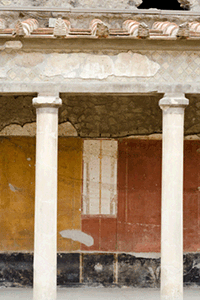
(iStockphoto)
Notwithstanding a global recession, people are still traveling and they are
still visiting museums. Fortunately, museums have continued to mount serious
exhibitions devoted to archaeology, and the public is showing its clear support.
In the annual survey recently published by The Art Newspaper, the top 10 shows in 2011
featuring antiquities attracted more than 4.5 million visitors, with some averaging nearly
4,000 per day!
The range of subjects was impressive. And it was a worldwide phenomenon. An exhibit
on Arabia could be seen at the State Hermitage Museum in St. Petersburg; Greek sculpture
was on view at the National Museum of Western Art in Tokyo; the Musée Quai Branly in
Paris hosted The Maya: From Dawn to Dusk; Washington, D.C.'s Arthur M. Sackler Gallery
featured The Gods of Angkor. Archaeological discoveries fascinated a public around the globe.
Serious exhibitions are years in the making, and the best of them embody new
research and interpretation. Three years out, American scholars
including John Clarke of the University of Texas and Elaine
Gazda of the University of Michigan are collaborating with
Italian archaeologists to organize an exhibition on a luxurious
Roman villa in Oplontis, near Pompeii. The show will display
works previously unseen in America. Beyond their visual beauty
and rarity, the finds of sculpture, wall paintings, ceramics, and
glass will be an impetus for study, publication, and classroom
discussion. This exhibition will be sure to attract a diverse
public when it opens at the Kelsey Museum of Archaeology in
Ann Arbor, and then travels to the Blanton Museum of Art in
Austin, the Museum of the Rockies in Bozeman, and elsewhere
yet to be determined.
Similarly, the Terracotta Warriors exhibit currently in New York City brings to American
audiences the spectacular life-size figures that represent one of the major archaeological
discoveries of the last century. Curator Chen Shen has included many nonmilitary figures
such as civic officials, acrobats, and animals in the exhibition in order to dispel the
widespread—but erroneous—notion that China's first emperor took only an army to his
grave. Rather, the emperor sought to re-create the entire world that he ruled.
We cheer our colleagues in the museum world. Their success affirms the valuable role
of museums in communicating all the stories that archaeology has to tell us.
Elizabeth Bartman is the president of the Archaeological Institute of America.
« President's Letter J/A 2012

